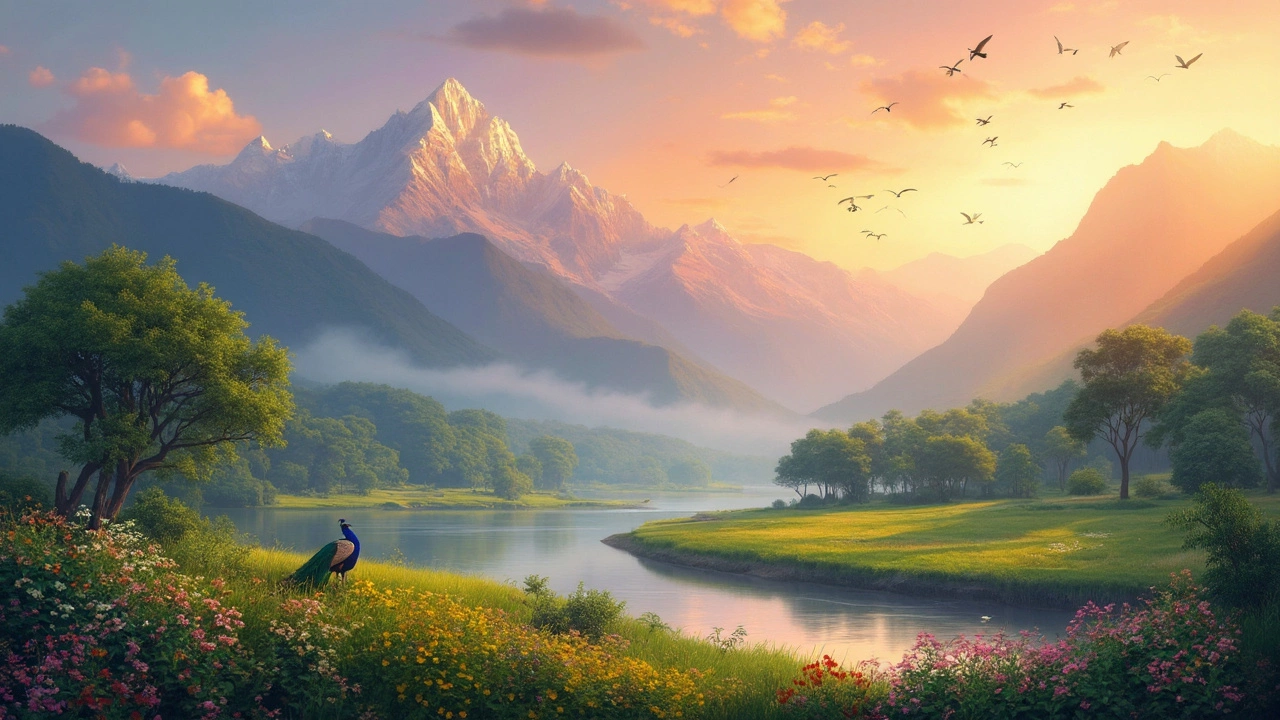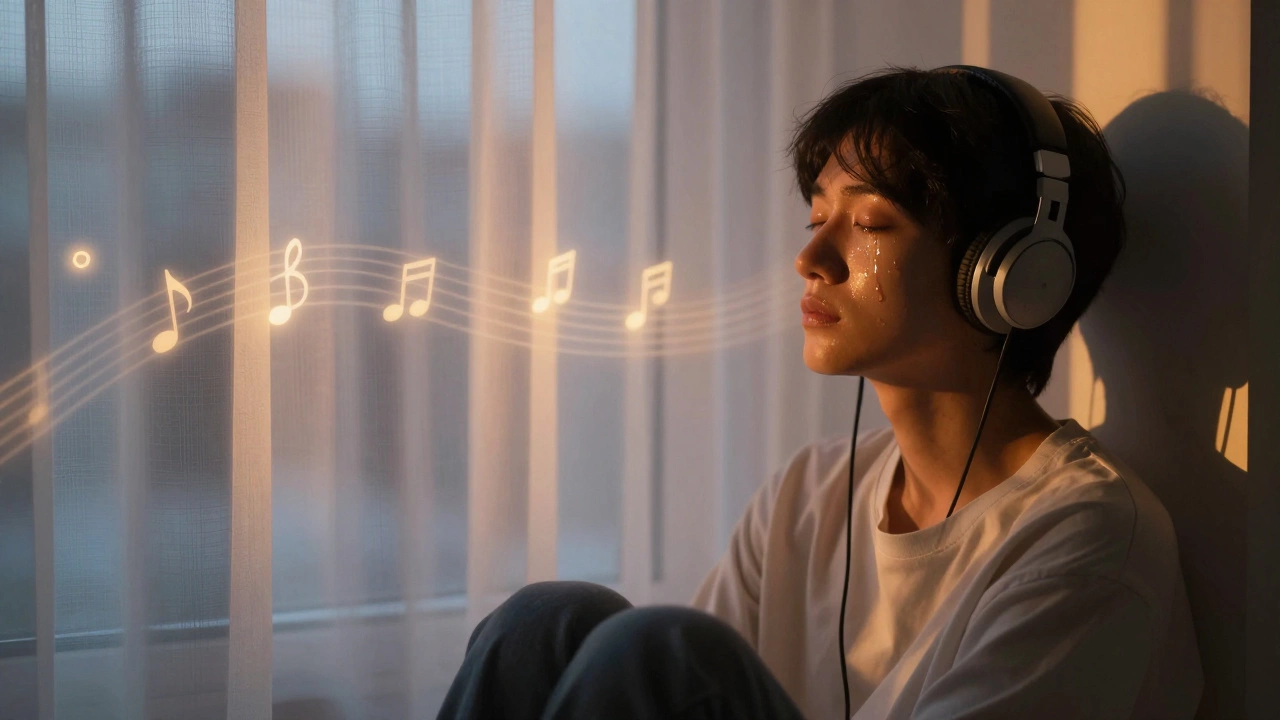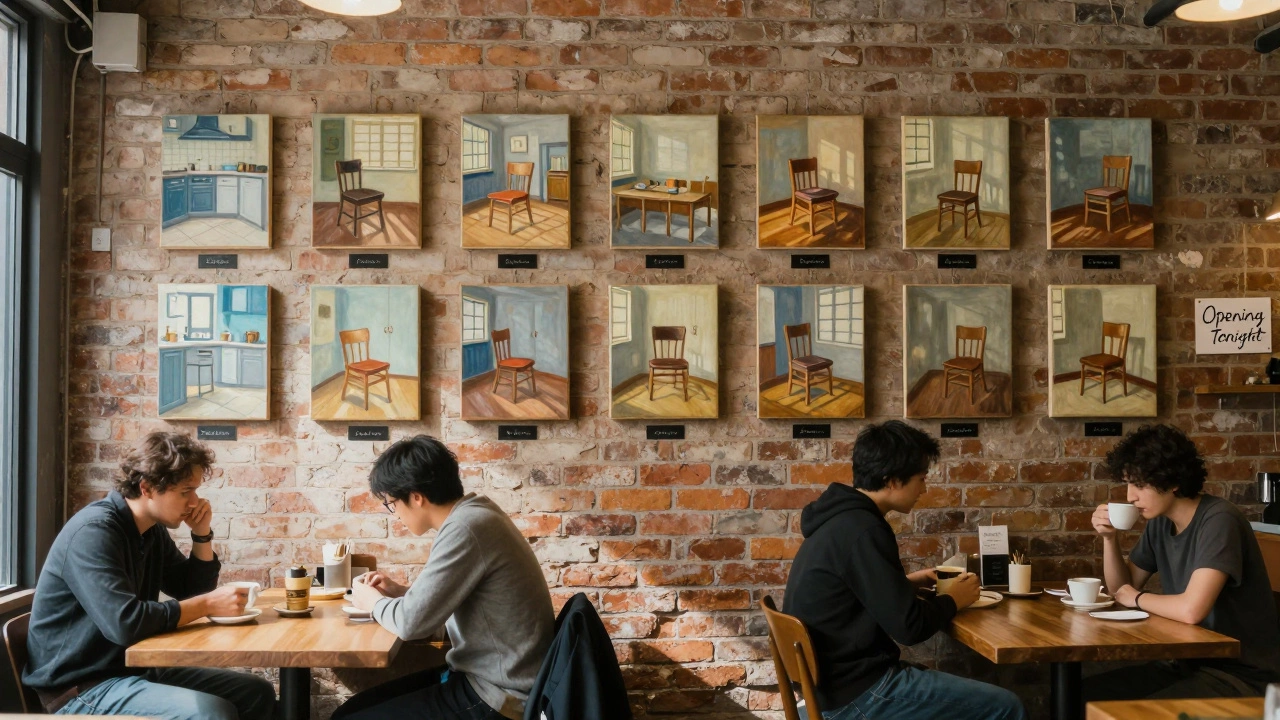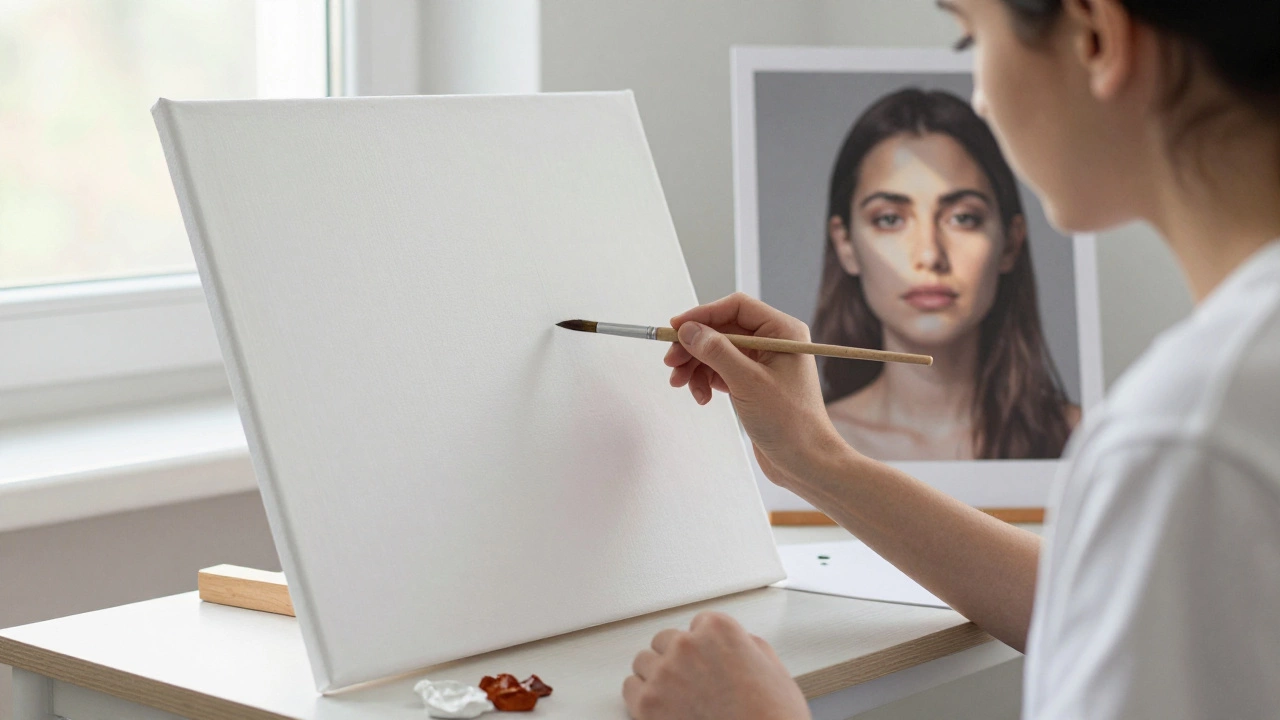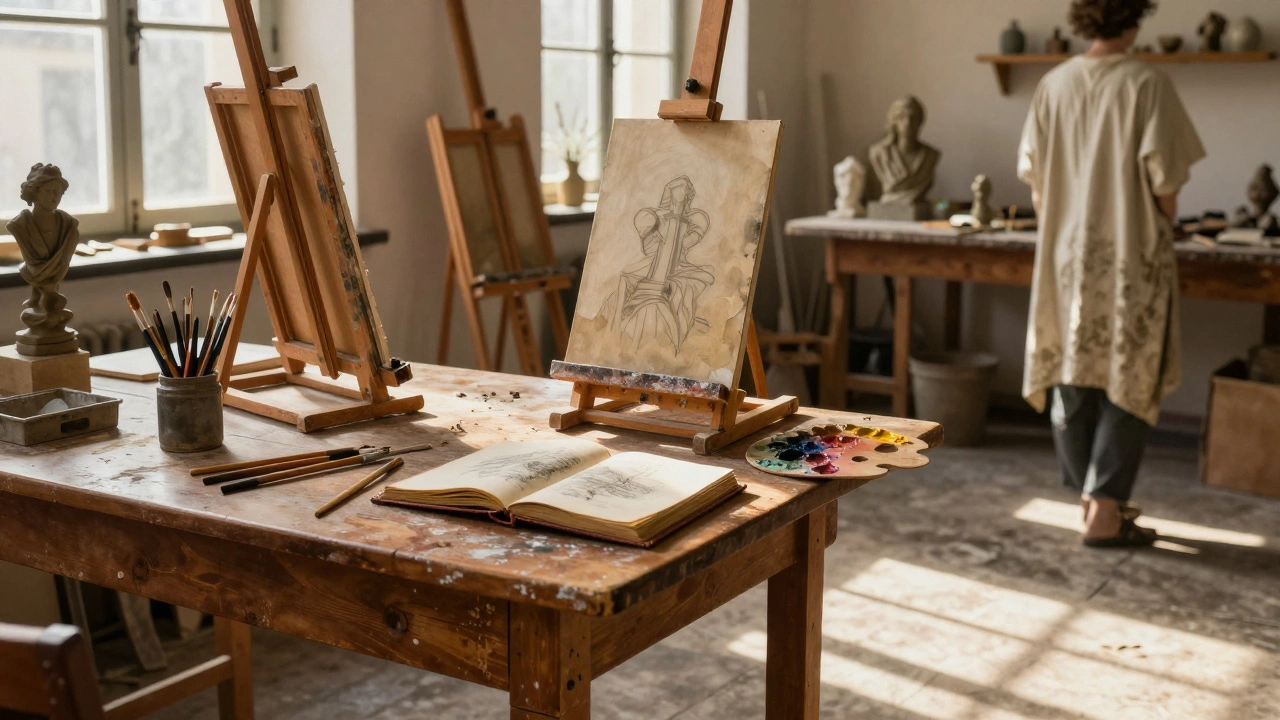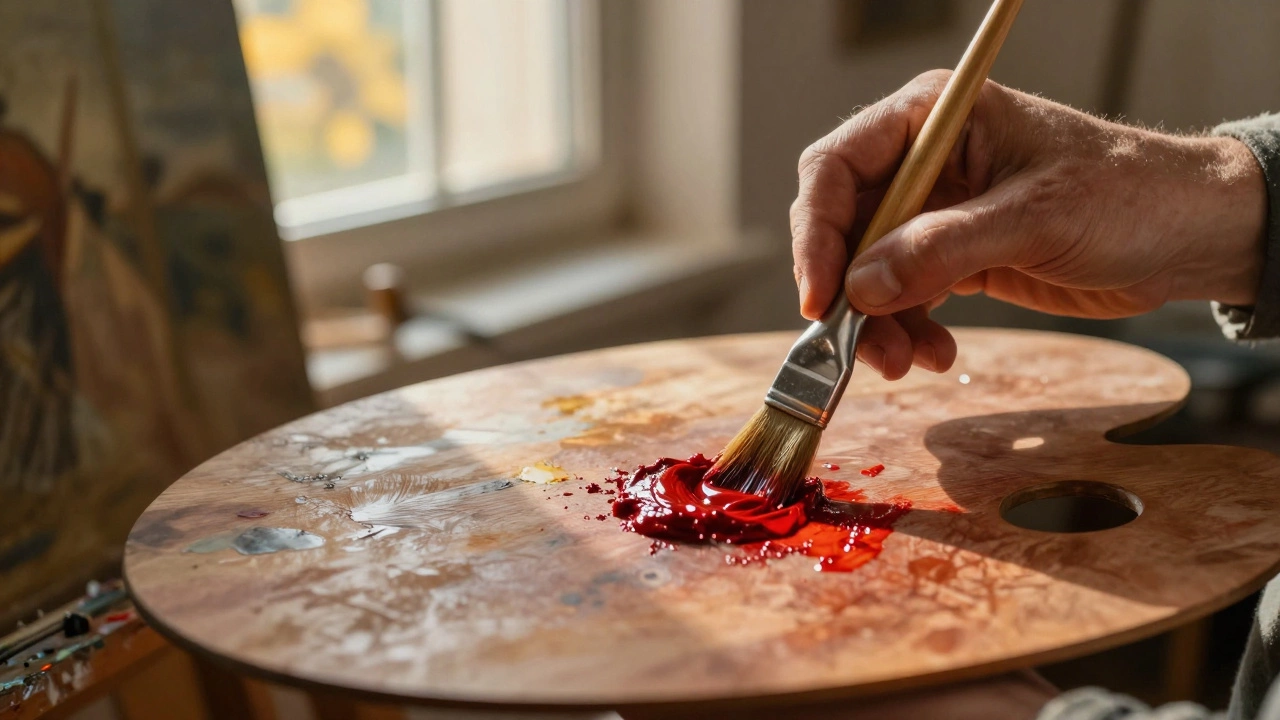I bet you've often marveled at those stunning landscape paintings that seem to pull you right into their world. Ever wondered what makes them so captivating? It all boils down to four main parts that create depth and intrigue in any landscape art: the foreground, middle ground, background, and sky. Each one plays a crucial role in bringing a scene to life.
First up is the foreground. It's like the welcoming committee of the painting, setting the stage and capturing your attention. Whether it's a winding path or a blooming garden, this part determines how you step into the scene. Moving on, the middle ground acts like the story's plot, connecting the generous foreground to the distant background. It's where details start to soften, yet still engage your curiosity.
The background is where the magic happens—providing depth and perspective. Think of mountains fading into mist, carving out a sense of vastness. Lastly, never underestimate the sky's role, whether it's a calming blue or a dramatic sunset. It frames the whole piece and can sometimes steal the show with its colors and textures.
- Defining Landscape Art
- The Foreground: Setting the Scene
- Exploring the Middle Ground
- Background: Creating Depth
- The Role of the Sky
- Practical Tips for Artists
Defining Landscape Art
So, what exactly is landscape art? At its core, it’s a branch of art focused on portraying natural scenery like mountains, valleys, trees, rivers, and forests. The beauty of this art form lies in its ability to stir emotions using wide spaces and natural elements.
Landscape art has a long history, making significant waves during the Renaissance. Artists back in the day started to embrace nature's vast beauty, moving away from religious themes. Fast forward to the 19th century, and you see the emergence of the Impressionist movement. Artists like Monet and Renoir painted en plein air (that’s a fancy term for painting outdoors) to capture light and how it danced across their scenes.
A cool thing about landscape painting is the variety it offers. Whether it’s an idyllic countryside or a bustling urban skyline, landscape art can be a reflection of the world around us or the artist’s personal fantasy.
The Importance of Composition
An interesting fact for you: skilled artists pay immense attention to composition, arranging elements to guide your eyes naturally through their artwork. This involves placing the foreground, middle ground, and background in ways that best capture the scene’s essence.
Another tidbit is about the Rule of Thirds, a nifty trick artists use. Imagine two horizontal lines and two vertical lines dividing the canvas into nine equal segments. Important elements are often placed along these lines or their intersections to create balance and interest.
The Foreground: Setting the Scene
In landscape art, the foreground is like the handshake—it sets the tone and grabs your attention right away. It's the part of the painting closest to the viewer, so naturally, it's where you often find the sharpest and most detailed elements. Think of it as the storyteller, drawing you in with rich textures and vivid colors.
Artists might choose elements like a rocky path, a collection of flowers, or a quaint fence. These elements not only attract the viewer but also lead into the rest of the scene. The key here is making these foreground features compelling yet integrated with the overall composition. They shouldn't just be an afterthought but rather a deliberate choice that enhances the narrative or mood of the painting.
Techniques for Painting the Foreground
Understanding some specific techniques can help bring the foreground to life:
- Contrast and Detail: Use contrasts in color and texture to make the foreground objects pop. Since they are closer, they should have sharper lines and more elaborate detail compared to the middle or background elements.
- Leading Lines: You can use paths, rivers, or any other lines in the foreground to guide the viewer's eye into the painting, creating a natural flow that keeps their attention.
- Perspective: Manipulating scale can impact how the depth is perceived. Larger objects in the foreground compared to those in the background enhance the sense of perspective.
Adding these elements requires some thought on how they affect the rest of the composition. Are they helping to connect elements of the painting together? Are they introducing the story you want to tell with your landscape?
Interesting Fact
Did you know that some famous landscape artists, like Vincent van Gogh, often used impasto—a technique where paint is laid on an area of the surface very thickly—to create textured foregrounds? This method not only adds depth but also creates an engaging tactile experience for the viewer.
Mastering the foreground could be your key to stepping up your landscape painting game. It's all about setting the right scene for viewers to fully immerse themselves in your artistry.
Exploring the Middle Ground
The middle ground in a landscape painting is like the bridge between the attention-grabbing foreground and the distant, dreamy background. Think of it as the story that unfolds in the scene. It's where you find paths meandering, rivers flowing, or perhaps a cluster of trees. By transitioning softly from detailed to less detailed elements, this area keeps the viewer’s interest moving smoothly through the composition.
Here’s an interesting fact: artists often use the middle ground to guide the viewer’s eye. By playing with leading lines—like roads, fences, or streams—painters create a natural flow that draws the audience deeper into the work. It's a clever way to make a simple painting feel dynamic and full of life.
Creating Depth with Color and Detail
In the middle ground, color choice plays a huge role. Artists often use cooler, muted colors here to naturally push these elements further back, helping to create a sense of depth. Similarly, the level of detail should be less than that in the foreground. While the foreground is vivid and textured, the middle ground starts to relax, with softer edges and blend of colors.
Balancing Act
Balancing the elements in the middle ground is essential. Overcomplicate it, and you risk losing the focus of the painting; keep it too sparse, and it might look disengaged. A good rule is to ask yourself: does the middle ground help the transition between the foreground and background? It should add to the unity of the composition without drawing attention away from the main focal points.
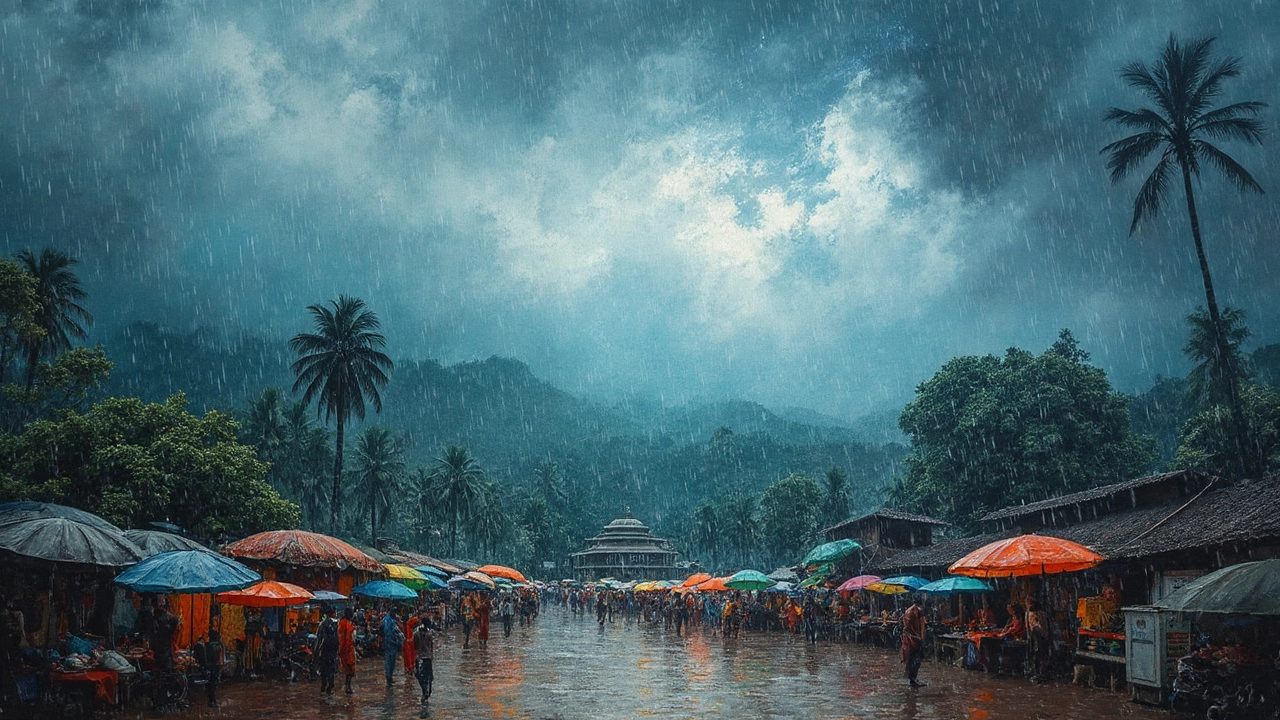
Background: Creating Depth
The background in landscape art is like the unsung hero of the painting. It's the element that quietly gives the scene its depth and opens up the world beyond what you see at first glance. One cool thing is how artists use varying levels of detail and color to create this illusion of distance. You might notice distant mountains or trees appear hazier and lighter. This technique is called aerial perspective and it's super effective in making a painting look three-dimensional.
Another trick artists use is size scaling. Objects in the background are painted smaller than those in the foreground and middle ground, reinforcing that sense of depth. Even if you're not conscious of it, your brain picks up on these cues and interprets them as distance. So the next time you see a landscape, notice how this subtle play of scales adds to its immersive feel.
Color choice also plays a significant role. Warmer colors like reds and yellows tend to grab attention and are usually used in the foreground, while cooler shades like blues and greens are often pushed to the background to make them seem further away. This not only helps differentiate between the parts but also creates balance and harmony throughout the painting.
Here's a fun fact: some artists even play with the idea of 'negative space.' In art terms, that's the area around and between the main objects in a painting. Using negative space smartly makes the painting look less cluttered and creates breathing room, enhancing the effect of the landscape painting.
Overall, these techniques aren't just about making things 'look nice.' They're key in creating landscapes that pull you in, making you feel like you could step into the painting and explore that distant world.
The Role of the Sky
In the universe of landscape art, the sky isn't just the backdrop of a scene; it’s a dynamic character that can transform the mood and impact of a painting. It's like the emotional thermostat of your artwork, deciding whether viewers feel calm, energized, or even anxious.
Let’s talk about colors. Ever noticed how a vibrant blue sky pairs perfectly with any bustling scene? It often breathes life and cheerfulness into a painting. On the flip side, a sky filled with thick, swirling gray clouds can create tension, making the viewer feel like they’re in the midst of an impending storm. Artists often play with these contrasts to influence how a viewer interprets the entire scene.
Creating Perspective
The sky also does wonders for perspective. When you add clouds, they can serve as directional guides, leading the viewer's eye deeper into the painting. Think of a bright, clear sky with soft, drifting clouds. They can hint at movement and space or a passage of time, making the whole scene feel expansive.
Here’s a fun fact: The Dutch masters like Jacob van Ruisdael were pros at using the sky to dictate the tone of their landscape paintings. In fact, they spent a significant amount of time perfecting just the right cloud formations.
Playing with Light
Lighting is another critical card played by the sky. The position of the sun, whether at dawn, noon, or sunset, dramatically changes the color palette and the mood. The golden hour right before sunset can bathe the scene in warm tones, creating a harmonious and comforting picture.
| Sky Condition | Mood or Impact |
|---|---|
| Clear Blue Sky | Calm, Cheerful |
| Cloudy Sky | Dramatic, Tense |
| Sunset | Warm, Nostalgic |
So, whether you’re a budding artist, or just someone who enjoys taking in a colorful view, pay attention to the sky's role. It’s more than just a pretty canvas—it's a crucial piece of the art composition puzzle, shaping narratives without anyone saying a word.
Practical Tips for Artists
When diving into landscape art, understanding each part's role can really transform your work. But let's get into some easy steps you can actually use when you're painting.
1. Play with Perspective
Adding layers of depth can make your landscape pop. Try using tonal variations to show distance—darker colors in the foreground and lighter hues as you move to the background.
2. Master the Composition
Use the rule of thirds! Imagine your canvas divided into nine equal parts. Place important elements along these lines or at their intersections to create balance.
3. Get the Details Right
The middle ground is your sweet spot for detail. It's far enough to create intrigue but close enough to showcase clear elements, like a distinctive rock or a cluster of trees.
4. The Sky's the Limit
Don’t overlook the sky. It can set the mood of your painting. Experiment with different cloud patterns or times of day to see what fits best with your scene.
5. Experiment with Textures
Adding texture can enhance realism. Consider using different tools to create texture for grass, leaves, or water. A palette knife or a dry brush can work wonders!
Practicing these tips regularly can truly refine your landscape painting skills. Whether you're a budding artist or just exploring, remember to keep experimenting. Happy painting!
